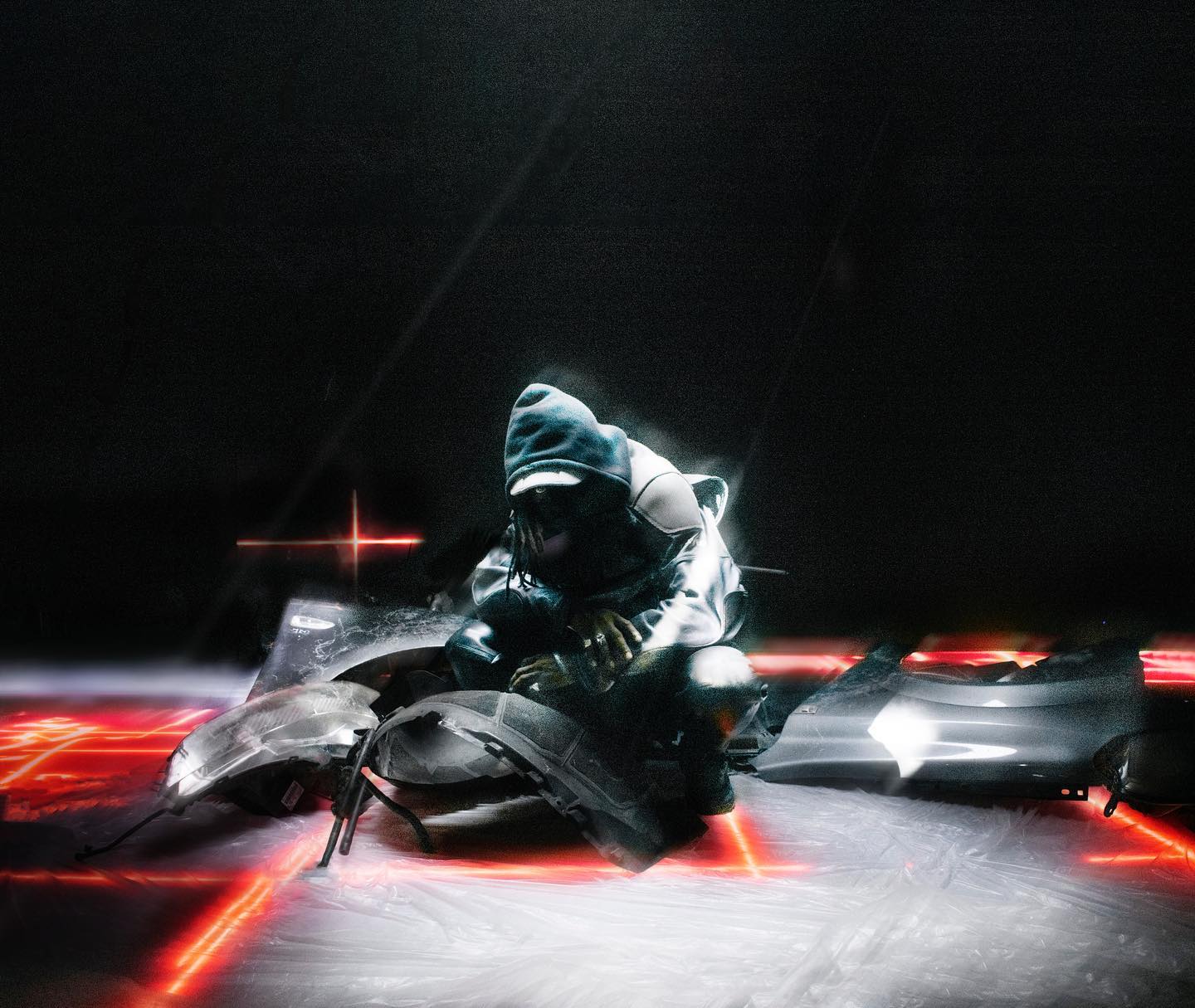
Culture Editor Leah Renz reviews the ambitious dance-theatre show TRAPLORD, a fusion of trap, dance and spoken word which explores the reality of being a black man in South London
A dark tunnel, lit with cold blue light strips, leads to a concrete basement. It is completely black, except for a large spotlight that scans across the stage and audience like a police searchlight. In the semi-darkness, figures stalk across the stage and, at intervals, stop to stare into the audience; their eyes shine bright out of a face that has been black-faced with black paint. Music throbs in the background through speakers, and the light picks out the bare muscled back of one of the dancers as he moves with his back to the audience. A dazzling burst of light, a clang of sound, and the audience immediately falls silent as the figures launch into dance. TRAPLORD has begun.
“In the semi-darkness, figures stalk across the stage and […] stop to stare into the audience
The dancers, splitting and coalescing into staggered lines or rave-style mosh pits, pulse with energy, and their facial expressions, teeth bared and hissing as bodies contort beneath, are particularly mesmerising. Figures slip in and out of stage, often climbing onto a platform from which they cackled into the microphone, sending reverberations of cold unnerving laughter: You think I’m crazy!? one taunts the audience.
The rapping itself is full of wordplay; functional conversion of verbs and nouns abounds as we hear how, for example, The shadow of an absent father figure/ casts a longer shadow/ than an adolescent mind can figure. This line initiates one of the most moving moments of TRAPLORD: a group of men, heavily breathing and flexing their arms, posture as shirtless macho men, goading each other into toughness. The central figure imitates this macho façade; the audience can see the tendons of his neck stretching as he yells and strains into the ultimate masculine form, but then we see him stumble, crumble from the inside and fall back into the arms of his fellow black men, who roughly, with words and hands, propel him back into his tough exterior, forcing him each time to assume a role which he does not have the words to reject.
“The dancers’ facial expressions, teeth bared and hissing as bodies contort beneath, are particularly mesmerising
These reflections on black masculinity, performed with choreographed violence in tracksuits, trainers, and hoodies with militaristic style body armour, reminiscent of the puffer jackets prevalent on the UK grime scene, hit harder in the basement space of 180 studios than they would have in the huge auditorium of Sadlers Wells (collaborator on TRAPLORD). The location combined with the fantastic lighting, designed by Simisola Majekodunmi, immersed the audience in the chaotic blend of abstract scenes and set pieces.
The abstract hybridity of TRAPLORD is one of its greatest strengths as well as, at times, a baffling weakness. Various symbols appeared and disappeared throughout the show: some, like the floppy-eared rabbit and Orwellian pig mask, extremely effective whilst others, like the crusader sword and gold-leaf mirror, generated more confusion than emotion. The sword in particular was distracting because it clearly served some symbolic function and yet this function was, to me, totally unintelligible. Combined with the frequent finger-gun actions of the cast and used in turn to aggress characters as well as slice open the door to heaven, it was unclear even whether it was a force for good or evil.
“Various symbols appeared and disappeared throughout the show: some […] generated more confusion than emotion
Another symbol which illicited confusion, and yet also intrigue, was the occasional David Attenborough style voiceover – ‘This is the perfect human’ – as one man contorts himself on the floor before a cage division. The implication, that the audience were not humans but rather some other species examining them in a zoo-like setting, cast the audience into the role of the coloniser, gazing onto a black man who, historically, has been literally caged for display. The idea of the ‘perfect’ human however felt unintegrated and therefore under-explained against the backdrop of the rest of the piece. Exiting the show, I was left with many questions about the deeper meanings behind some of the symbolic inclusions.
“Unlike anything I have ever seen
Overall, however, TRAPLORD is an engrossing blend of music, dance and spoken word. I think the unnerving and discomforting of the audience, present during sections of the show, could have been pushed harder to create an even more emotionally transportive experience. There is nothing to fault with the music, however. In one part, the words of Billie Holiday’s ‘Strange Fruit’ are reworked into a rap about the idea of bearing fruit from seed thrown on concrete ground, effectively blending Biblical imagery with urban space, and sexuality with masculine expectation. TRAPLORD, in its exploration of black masculinity and mental health, is unlike anything I have ever seen, and I look forward to seeing what Ivan Michael Blackstock creates next.
Rating: 4/5
Enjoyed This? Read more from Redbrick Culture here!
Theatre Review: Queen of Hearts
Musical Review: Coming to England – A Double Perspective
Dance Review: Matthew Bourne’s Nutcracker!

Comments